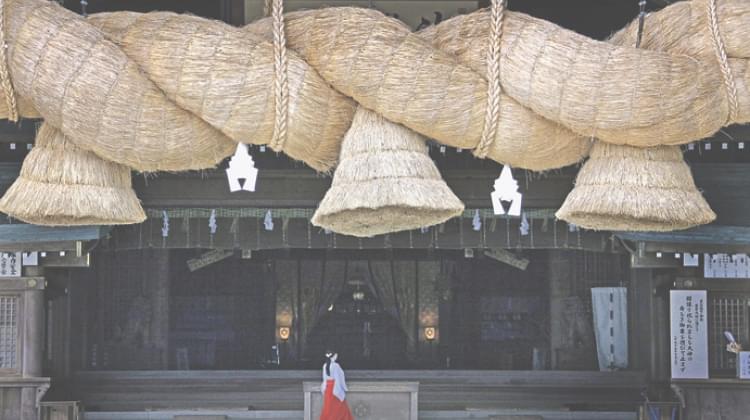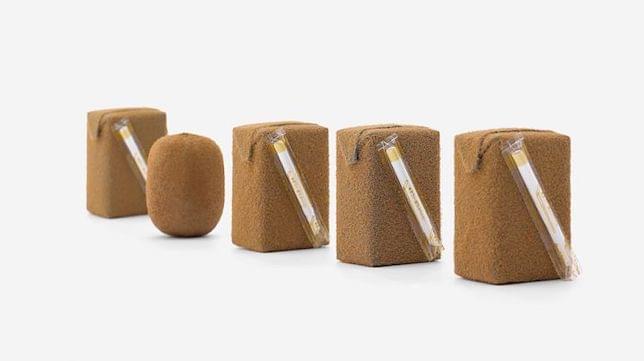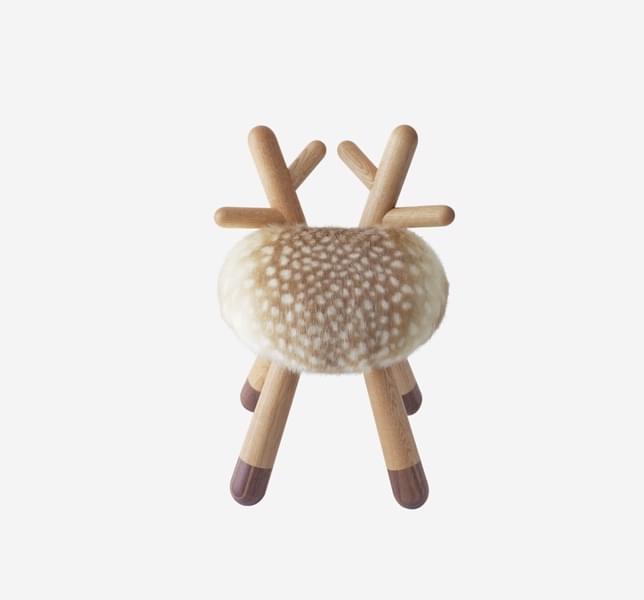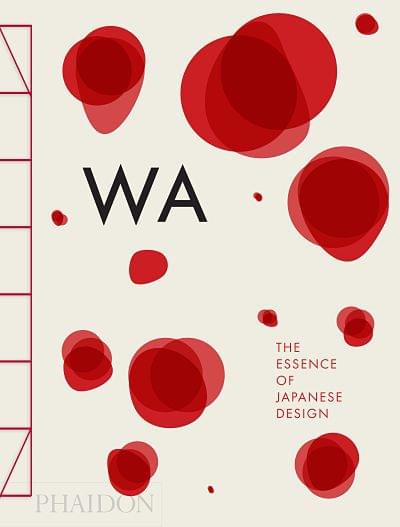
Sacred rope (Shimenawa), 17th century
Traditionally bound in an appealing Japanese style, featuring folded pages bound with striking red cord, WA: The Essence of Japanese Design is a tactile treat for the senses. Applied abstract designs on the covers indicate this is no ordinary book. Delve into WA and you’ll discover a cleverly curated collection of Japanese design, full of the dichotomies integral to Japanese culture; modern v. traditional, ornate v. simple, quirky v. urbane. From bento boxes, to calligraphy brushes, to kimono-inspired Kenzo designs, the objects are divided by their materials of manufacture (such as: Wood / Bamboo / Lacquer). Fascinating introductions by the authors/curators precede each section.

Juice skin packaging, ‘Haptic – Awakening the Senses’, Takeo Paper Show, 2004, Naoto Fukusawa, Tetra Prisma Aseptic; fibres
Japanese design is infused with a lesser understood belief system than Buddhism: Shinto. This is elegantly deconstructed in ‘The Origin of Japanese Design’ by Kenya Hara (designer and art director of Muji). I’d often wondered, yet never found out, what is in a Shinto shrine. It may, frankly, only take a google search to find this kind of information, but what matters is how it is presented, and here is presented powerfully and unpretentiously with a superb series of small diagrams. The answer is: nothing. Nothing is in a Shinto shrine. Yet, that nothing, that emptiness, represents the potential for all life energy to be present there.

Bambi chair, 2012, Takeshi Sawada; Oak, walnut, synthetic fur
Mind blown, I move on to the seemingly more solid materials sections, which highlight key concepts such as this one, which ‘distinguishes Japanese culture from Western culture: the former based on the lightness an impermanence of wood, the latter on the solidity and permanence of stone.’ (Piotti, p.20). Flipping through centuries in 250 key objects.
Wonder-full from cover to cover, WA examines the philosophy behind design and, ultimately, the phrase itself ‘WA’ – which refers ‘not only to the concept of harmony and peace but to Japan and Japanese culture itself’. Recommended to all who want to more deeply journey into the amazing world of design originating from Japanland.
You can see more images and buy the the book here, on Phaidon’s website. Thanks so much to Phaidon for the review copy.
Or, on Amazon here: WA: The Essence of Japanese Design (amazon associate link) by Rossella Menegazzo and Stefania Piotta, Phaidon Press 2014, Hardback £49.95

WA: The Essence of Japanese Design
